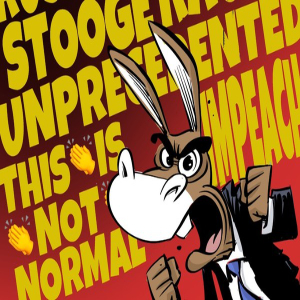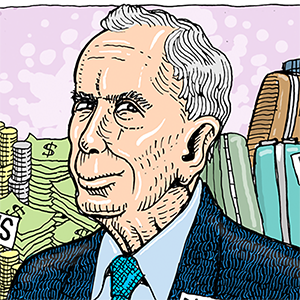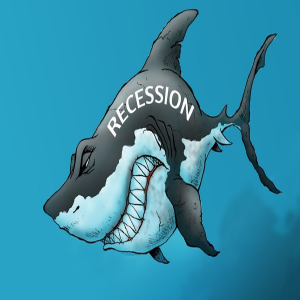Trump's moves to slash federal workers are raising alarms in Maryland
Published in Political News
WASHINGTON — Union leaders and elected officials who represent tens of thousands of federal workers in Maryland are reviewing what they say are potentially harmful impacts of President Donald Trump’s moves to implement a hiring freeze, end work-from-home policies and, eventually, remove thousands of workers from the federal payroll.
The immediate results of the new president’s executive orders — which could play an outsized role in Maryland compared to other states — are still being determined as Trump’s second term takes shape. On Tuesday, the Trump administration directed all federal diversity, equity and inclusion staff to be put on leave.
Details published by the White House show Trump’s executive orders, in some cases, are not as restrictive as his public statements, which have included thoughts of firing “most of those bureaucrats” and getting “immediate control of the vast federal out-of-control bureaucracy.”
But those in the crosshairs are raising alarms after months or years of public attacks as they figure out the next steps.
“Make no mistake — this action is not about making the federal government run more efficiently but rather is about sowing chaos and targeting a group of patriotic Americans that President Trump openly calls crooked and dishonest,” Everett Kelley, national president of the country’s largest federal workers union, said in a statement.
The union represents some of the roughly 160,000 federal civilian jobs in Maryland. Those jobs account for about 11% of wages paid in the state, meaning any significant cuts could mean a blow not just to the workers but to the state’s already depleted budget.
“The greatest issue with Maryland would be reductions in the federal workforce,” U.S. Rep. Andy Harris, an Eastern Shore Republican and ardent Trump ally, said in an interview earlier this month when asked about the looming local impacts of the new administration.
Harris acknowledged the stress that cuts could put on the state and its residents, though he added many Americans believe the government had grown too large.
“Maryland for too long may have depended upon government employment as a major industry, and this is very different from the other parts of the country that are very successful in both attracting capital and attracting citizens,” Harris said.
Maryland Democrats, meanwhile, have said they will push back against the moves.
U.S. Rep. April McClain Delaney, a Montgomery County Democrat who said her district is home to 35,000 federal workers, said she’s been hearing from “numerous constituents who are extremely worried about these policies.”
As a former civil servant herself — as a deputy assistant secretary of communications at the Department of Commerce before her campaign last year — McClain Delaney said she “strongly urge[s] President Trump to proudly recognize the work of our federal employees — not diminish it.”
U.S. Sen. Angela Alsobrooks offered a similar sentiment, saying the workers she represents statewide “aren’t focused on the politics or the culture wars of the day.”
“They’re researching cures for cancer at the National Cancer Institute in Frederick and Bethesda. They’re keeping our food safe at the FDA in Silver Spring. They’re delivering benefits to seniors at the Social Security Administration in Woodlawn. No matter who sits in the White House, these workers are delivering results,” Alsobrooks said.
What the orders say
Trump’s orders directly target employees while also setting the stage for a new Department of Government Efficiency run by Elon Musk. He has said he envisions $2 trillion in cuts and a 75% slashing of the federal workforce. One executive order Trump signed Monday set up DOGE and gave it an 18-month window to conduct its work, which includes assigning a “DOGE team of at least four employees” in every agency.
Despite Trump talking about it in blanket terms, the hiring freeze executive order makes several exceptions.
It does not apply to positions within the military or those related to immigration enforcement, national security or public safety. It also states there should be no moves to “adversely impact” Social Security, Medicare or veterans’ benefits. Plans to “reduce the size of the federal government’s workforce through efficiency improvements and attrition,” meanwhile, should be developed by the administration within 90 days.
A separate order mandating employees return to the office states it should be conducted “as practicable” and with exceptions allowed by agency leaders.
The American Federation of Government Employees, the union that represents about 800,000 federal workers, is currently reviewing the orders, a spokesman said.
The work-from-home dilemma
Republicans have long decried the size of the federal government and, in the last five years, the work-from-home policies that kept government agencies functioning during the pandemic.
At a four-and-a-half-hour hearing last week, they targeted agencies such as the Baltimore County-based Social Security Administration — which former Maryland Gov. Martin O’Malley ran for most of Joe Biden’s last year in office — as they questioned whether telework was wasting government resources and slowing down services.
“With all due respect, nobody’s buying what you’re selling if they’ve had to deal with the Social Security Administration,” U.S. Rep. James Comer, a Kentucky Republican who chairs the House Committee on Oversight and Government Reform, said to O’Malley as he testified about increasing productivity and customer service at the agency.
O’Malley came prepared with large charts and other statistic-filled displays as he cheerily pushed back against criticisms.
He said he required the roughly 7,000 Woodlawn-based employees and others around the country to work from the office at least three days a week and at least four days for his staff in the commissioner’s office. Productivity increased 6.2% in the year he was there despite record-low funding for staff, which effectively put the agency in a hiring freeze, he said.
Questioned about an agreement he signed in November that permits 98% of Social Security employees to work from home for the duration of Trump’s new term, O’Malley stressed it made those workers “eligible” for telework rather than require them to telework.
“That’s not what I did, congresswoman,” he told U.S. Rep. Virginia Foxx when she called the agreement an “abomination” that was not in “the best interest of the taxpayers” as it let almost all workers stay at home.
U.S. Rep. Kweisi Mfume, a Baltimore Democrat, said during the hearing that he was hoping to find the right balance across the federal government.
Fewer commuters have meant abandoned office buildings and closed downtown businesses in Washington, D.C., and fewer riders for the metro and MARC systems, he said, emphasizing the continued role of in-person work.
“What this does not mean… is that all federal employees who are teleworking are lazy or apathetic or are not doing their job. And it does not mean that all telework should be abandoned or eliminated,” Mfume said.
----------
©2025 The Baltimore Sun. Visit at baltimoresun.com. Distributed by Tribune Content Agency, LLC.




























































Comments